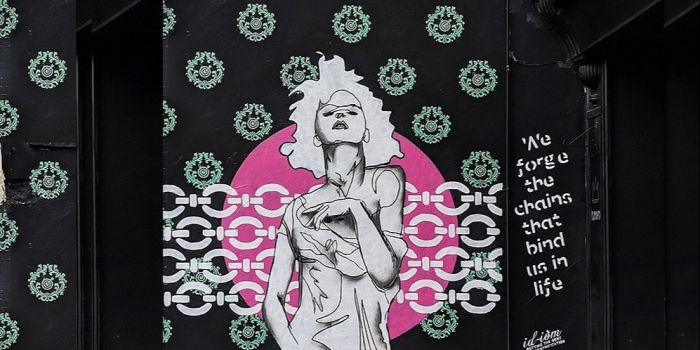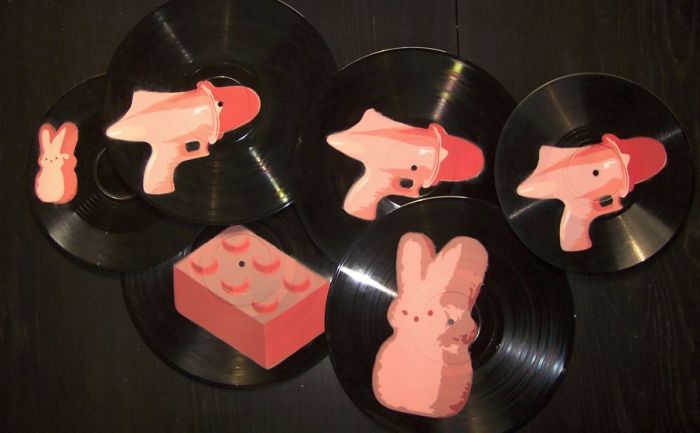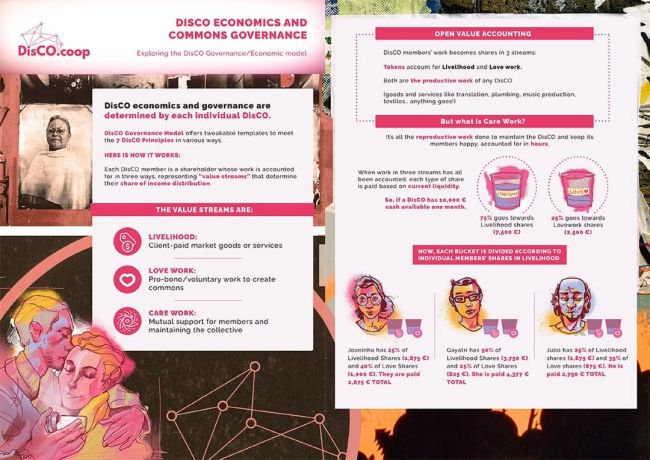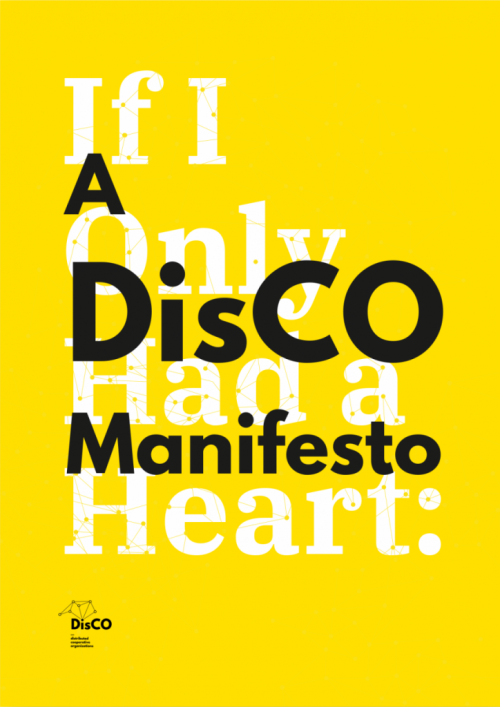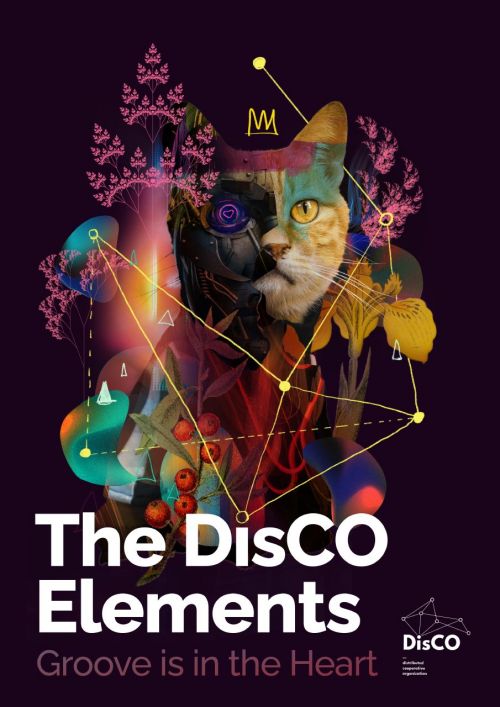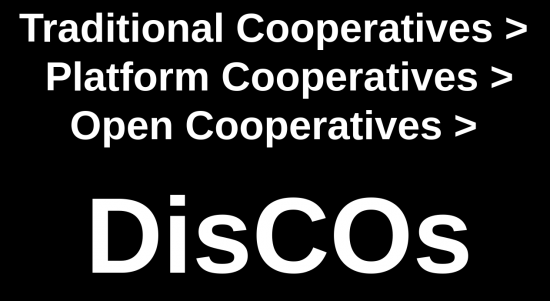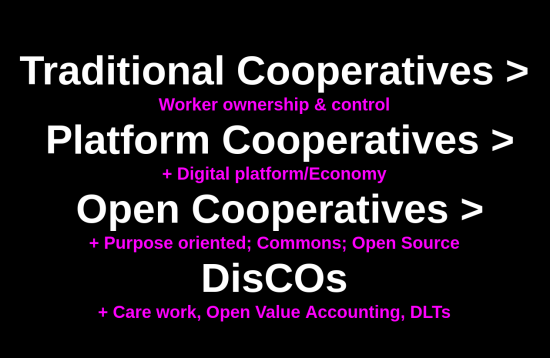Difference between revisions of "DisCO Mothership Governance Model"
| Line 335: | Line 335: | ||
<big><span style="background-color: #ff00ff"><font color="#ffffff">'''IMPORTANT. MOST OF THE POINTS IN THE TL/DR NEED TO BE LINKED TO AS-YET UNWRITTEN OR ADAPTED SECTIONS OF THE GOV MODEL. IN-DOCUMENT LINKS WILL NEED TO BE ADDED TO THIS TLDR. </font></span></big> | <big><span style="background-color: #ff00ff"><font color="#ffffff">'''IMPORTANT. MOST OF THE POINTS IN THE TL/DR NEED TO BE LINKED TO AS-YET UNWRITTEN OR ADAPTED SECTIONS OF THE GOV MODEL. IN-DOCUMENT LINKS WILL NEED TO BE ADDED TO THIS TLDR. </font></span></big> | ||
| − | This TLDR is a bare-bones version of the main characteristics of this governance model. It is also applicable to [[#The_DisCO_Applications_Program | other DisCO Applications]]. The only difference being the | + | This TLDR is a bare-bones version of the main characteristics of this governance model. It is also applicable to [[#The_DisCO_Applications_Program | other DisCO Applications]]. The only difference being the '''main source of capital for value distribution'''. When capital is mainly sourced from the provision of goods and services, we are talking about a DisCO Cooperative, Social Solidarity Economy entity or SME (DisCO4coops). When capital is mainly sourced from philanthropic, public or crypto grants and agreements, we are talking about a DisCO NonProfit (DisCO.NP).<ref>We use "mainly" here, as DisCO Coops may also receive philanthropic grants. Similarly, DisCOs.NPs can also offer [[#DisCOnsulting | consultancy services]] to accrue additional capital for the DisCO.NP social mission and its contributors.</ref> |
In any case, the only divergences are limited to points 3.1 and 3.2 below. Otherwise the TLDRs for DisCO4Coops and DisCO.NPs are identical. | In any case, the only divergences are limited to points 3.1 and 3.2 below. Otherwise the TLDRs for DisCO4Coops and DisCO.NPs are identical. | ||
Revision as of 07:16, 30 March 2021
Welcome to the DisCO Mothership Governance Model
Hello and welcome! For a brief summary of the DisCO Mothership Governance model, jump directly to the Introductory Articles, Infographics and Other DisCO Governance Resources section below. To get the full picture, keep reading.
The DisCO MOTHERSHIP refers to the group of people currently working in DisCO.coop and carrying out the DisCO Project [1] This is the governance model by which our organization functions as a living DisCO LAB. THIS MODEL IS CURRENTLY BEING DEVELOPED AMONG THE DisCO MOTHERSHIP TEAM. KEEP CHECKING THIS PAGE FOR ONGOING DEVELOPMENT
This DisCO MOTHERSHIP Governance Model is a substantial fork of Guerrilla Media Collective's version of the DisCO Governance Model. Guerrilla Media Collective (henceforth GMC) is the original DisCO LAB from which DisCO.coop arose.[2] GMC's Governance Model is the base DisCO Governance Model for worker-owned coops , Social Solidarity Enterprises and SMEs.
This version of the DisCO Governance Model (3.5) is not aimed at working collectives offering goods and services in the marketplace, but non-profits, such as the DisCO Foundation.[3]
The DisCO MOTHERSHIP Governance Model is being further developed as part of the Distributed Cooperative Organization (DisCO) Governance/Economic Model V 4.0 for eventual inclusion in the DisCO BALL. Version 4.0 is a non DisCO specific version highlighting the main DisCO governance templates, of the DisCO Applications Program or DAP. [4]
All changes between version 3.0 (The Guerrilla Media Collective Model) and version 3.5 (The DisCO MOTHERSHIP/DisCO.NP Model) are tracked in the DIsCO Governance Model Version Changes entry
Overview
This document describes a governance/economic model for self-sustaining, mission-oriented, distributed organizations.
It values pro-bono (love), care, and livelihood work with complementary metrics and dispenses rewards accordingly.
The purpose is to extract people from the capitalist marketplace so they can use their unique talents to do fulfilling, and socially and environmentally meaningful work. The document prototypes a governance model fit for digital labor. This model mixes theory with proven on-the-ground practice: it originated in an existing organization: Guerrilla Media Collective or "GMC", also known through the P2P Translation collective Guerrilla Translation [5]
As explained in the Introduction above, this version of the DisCO Governance Model (3.5), is a fork of the GMC model. The version you are currently reading serves two complementary purposes:
- It functions as the template governance model for DisCO Non-Profits (AKA DisCO NP)
- By using DisCO.coop to illustrate the DisCO NP Governance model this document is the de-facto governance model for DisCO.coop
How to read this governance model
In the following sections we'll examine:
- Distributed Cooperative Organizations: a brief introduction to DisCO.
- Roles and responsibilities: within the organization and how decisions are made.
- Contribution and tracking: The ways that value is tracked and rewarded.
- Decision making processes: How stewardship is held by all who have demonstrated willingness and invested personal effort participating in the collective's goals.
The last three areas are interdependent. Roles and Responsibilities reflect a member's investment in the DisCO.NP and their level of participation. This investment is not monetary, but contribution based — the more a member puts into building the DisCO.NP, whether through pro-bono, funded or reproductive work [6], the more their investment is weighted in the DisCO.NP's ownership and decision making mechanisms. This investment/stake is measured through Contribution Tracking and it also affects the Decision making process.
While we have presented the three sections sequentially, the document doesn't necessarily follow a linear narrative.
Each section refers to the others and the document features many page-jump links to different relevant sections[7] and related entries in the DisCO MOTHERSHIP Wiki. [8]
Important: We recommend reading it at your own pace, taking notes and jumping from section to section until you have a clear picture. If you're already conversant in DisCONomics, you may want to skip large tracts of this Overview section and skip directly to Roles and Responsibilities section. If you're not familiar, read on or check the Introductory Materials section below.
Speaking about pictures, this section features an infographic summary of the model, links to introductory articles and other resources to make the model more digestible. If you're not already familiar with DisCO, start by familiarizing yourself with these materials, or the model may be very hard to comprehend.
What we offer here is an equipotential and opt-in engagement governance model. This means that everyone who participates in a collective (and, in this case, a DisCO Non-Profit) will have their work valued, and will be expected to participate in the decision making process. Decisions and control are shared, based on contributions and peer review.
To see how we envision the model in practice, DisCO.coop is used as a showcase example, but it’s important to note that the model is designed to be picked up and adapted by other Distributed Cooperative Organizations whether they’re other Non-Profits, coops or other types of entities (see The DisCO Applications Program section below). To ease the narrative, the terms "DisCO.coop" the "DisCO MOTHERSHIP" and "the collective" are often used interchangeably. For clarification on these terms, please consult the DisCO Glossary and PLACEHOLDER FOR NAME AND WIKI LINK FOR CLARIFICATION DOC
Introductory Articles, Infographics and Other DisCO Governance Resources
If you're not already familiar with DisCO we recommend taking some time to get the picture overview of what we offer before diving deep into the minutiae of this Governance Model.
DisCO intro articles and short videos
For a brief introduction to DisCOs we recommend these two introductory articles, with their corresponding video trailers:
1: Last Night A Distributed Cooperative Organization Saved My Life: A brief introduction to DisCOs
"DisCO stands for Distributed Cooperative Organizations, and it’s a set of organizational tools and practices for groups of people who want to work together in a cooperative, commons-oriented, and feminist economic form. DisCO is also an alternative to another form called the Decentralized Autonomous Organizations, or DAO".
2: DisCO in a Nutshell (Covid Edition)
"Distributed Cooperative Organizations or DisCOs explained in a nutshell and what they mean in the context of the Covid-19 crisis."
3: Take Your Time, Do It Right: Commons Governance
"A guide to how DisCO governance specifically articulates the 7 DisCO Principles and Eleven Values. Includes infographic illustrations about the DisCO Governance and economic model"
DisCO Governance Model Infographic
The DisCO Governance Infographic features a simplified visual explanation of the Basic DisCO Governance Model.
The DisCO Trilogy
The DisCO Trilogy comprises three downloadable multi-format publications covering various aspects of DisCO. Also to be published as Audiobooks (see section below)
If I Only Had a Heart: The DisCO Manifesto
The DisCO Manifesto is a deep dive into the world of Distributed Cooperative Organizations. Over its 80 colorful pages, you will read about how DisCOs are a P2P/Commons, cooperative and Feminist Economic alternative to Decentralized Autonomous Organizations (or DAOs). The DisCO Manifesto also includes some background on topics like blockchain, AI, the commons, feminism, cooperatives, cyberpunk, and more.
Care Before Code: The DisCO Elements
The DisCO Elements is a compilation of several articles on DisCO, including dedicated sections on DisCO in our current historical and Pandemic context, the Seven Principles, DisCO Governance, DisCO Carework and DisCO policies. The DisCO Elements is a "director's cut", expanded from a publication commissioned by Autonomy.work. The DisCO Elements will also be serialized as standalone articles in Hackernoon and cross-posted in DIsCO Stories.
The DisCO PinkPaper
(Forthcoming, late 2021) White paper for the DisCO project, not only describing technological aspects side, but also highlighting the cultural and ethical considerations underlying our design choices. The DisCO Pinkpaper will include sections on the DisCO FLOOR, DisCO DECK and their co-dependencies, as well as a sections on the DisCO STACK and how it relates to FLOOR and DECK.
Other DisCO Links and Resources
Your main resources for all things DisCO is our website [List of DisCO Resources DisCO.coop] and this wiki.
For a regularly updated compilation of all resources on DisCO that have been published up to date, visit the List of DisCO Resources entry.
Precedents to the DisCO Governance Model
Like anything else in life, this model didn't arise out of nowhere and is the result of many influences, distilled down to the current DisCO Governance Model.
The Open Enterprise Governance Model
The DisCO Governance Model and its various applications are a substantially developed fork of the Better Means Open Enterprise Governance Model (OEGM). The adaptations have been made to:
- Bypass the original model’s start-up/for-profit orientation
- Address the needs and ideals of
- Benefit a variety of entities self sustain their social vision while addressing their specific requirements and allow for future modifications.
- Shift the focus from technical, protocol-based solutions to relations, trust and care work.
For more influences, see the next section.
From Platform to Open Cooperativism to DisCO
Apart from the Better Means Governance Model, explained above, DisCO has a rich lineage, going from traditional cooperatives, Platform Cooperatives, Open Cooperatives and, with the addition of Feminist Economics, Open Value Accounting and Distributed Ledger Technologies.
Here is a brief explanation of each of these cooperative movements, with links to additional resources:
Cooperatives
A cooperative (or coop/co-op) is any self-governed organization or business in which members focus on mutual assistance while working towards a common goal in everyone’s best interest. Read What is a Cooperative? on the International Cooperative Alliance's (ICA) website for a short introduction.
Platform Cooperatives
Platform Cooperatives seek to democratize the ownership and governance of the digital platforms that increasingly mediate our daily lives. Check out the Platform Cooperativism Consortium's website for abundant resources on Platform Cooperativism.
Open Cooperativism
Open Cooperativism, or "Open Coops" is an approach towards working together that aims for the democratization of ownership and governance, while focusing on the production of commons. Open Coops arose simultaneously with Platform Cooperativism in 2014. Read From Platform to Open Cooperativism to check out the differences and commonalities between Platform and Open Coops or this shorter explanation, which includes infographics and a TLDR.
Open Coops are the precursor to DisCO. DisCO evolves on the initial premises of Open Cooperativism by re-conceptualizing Open Coop's four original principles and adding new, explicit principles on Feminist Economics, Open Value and Federation.
You can read more on the Seven DisCO Principles on Chapter 3 of the DisCO Elements or this wiki's entry on DisCO in 7 Principles and 11 Values. You can also jump to an abbreviated summary of the Principles in this section of the Mothership Governance Model.
DisCOs are not necessarily better than their precursors. They, more specifically, focus on social and environmental outcomes from a feminist, decolonial and post-capitalist point of view. On the one hand, DisCO gathers the best of the three preceding movements. On the downside, DisCOs are also more complex in the initial stages, although once their learning curve has been overcome, we'd argue that they function more smoothly and are more resilient organizations. Here are the main differences:
In summary all DisCOs are "classic" cooperatives, Platform Cooperatives and Open Cooperatives, but not all classic, platform or open coops are DisCOs. (Come join us!PLACEHOLDER FOR LINK IN DISCO.COOP). The DisCO model has very specific design features and constraints to favor certain (feminist, commons-oriented) outcomes. We will delve into these features in the following sections.
From Guerrilla Translation/Media Collective to DisCO
At the top of this Overview section we clarified that version 3.5 of this Governance Model is a fork of Guerrilla Media Collective's 3.0 version of the model, oriented towards Worker-Owned coops. Version 3.0 was mostly developed in 2018 based on the influences listed above. This gradually morphed into DisCO during the autumn of 2018. This transition from Open Cooperativism, to GMC's governance model, is documented in a series of articles that can be found in this section of the 3.0 Governance model: Version History and Related Resources.
For a layperson's overview of the 2018 developments on the governance model, read Elegance: How Guerrilla Translation reimagined itself for Open Cooperativism, an article on Guerrilla Media Collective/Translation's 2018 workshop where versions 2 and 2.5 of the model were prototyped, leading to version 3.5.
As already mentioned, all changes between version 3.0 (The Guerrilla Media Collective Model) and version 3.5 (The DisCO MOTHERSHIP/DisCO.NP Model) are tracked in the DisCO Governance Model Version Changes entry ongoing.
Other Notable Influences in the DisCO DNA
DisCOs' main influences are described in Groove is in the Heart: the DisCO Elements chapter 2: DisCO in a Nutshell. From the text:
DisCOs are a cultural and structural framework that combines influences from other forms and movements into a practical toolkit. The framework is based on existing, disruptive economic alternatives normally absent from the blockchain space. They are:
- The Commons and P2P: Self-organized systems stewarding resources to meet human needs while leveraging the power of networks. [9]
- Open Cooperativism: Combining Open Source and Commons principles with those of the cooperative and social solidarity movements.[10]
- Open Value Accounting: Enables value sovereignty by rewarding meaningful contributions to projects, rather than wage labor.[11]
- Feminist Economics: Challenges normative economic abstractions while factoring reproductive and care work.[12]
These influences, together with a strong focus on accessibility and social and economic justice, provide DisCOs with vastly different affordances to other available alternatives such as Decentralized Autonomous Organisations or DAOS.
DisCO has also been strongly influenced by 15 M and Occupy, the Zapatista Movement, David Bollier and Silke Helfrich's Free Fair and Alive, Decoloniality, Decolonial and Intersectional Feminisms, our past work at the P2P Foundation [13], Telekommunisten's work on the Venture Commune; Kevin Carson's work on peer to peer post-capitalism, Silvia Federici's work on commons and feminism, the work of Donna Haraway, Parecon, Ursula Huws, and the P2P Lab Research Collective, Punk Rock and Discorniadism, among many others.
To access all these influences and more, check out the following entries:
DisCO in Seven Principles and Eleven Values
As mentioned in the section on Open Coops above, DisCO evolves on the initial premises of Open Cooperativism by re-conceptualizing Open Coop's four original principles and adding new, explicit principles on Feminist Economics, Open Value Accounting and Federation.
This evolution is codified in the 7 DisCO Principles and 11 Values. Starting with the 7 Principles, the following infographic and PDF text on the DisCO Principles are extracted from The DisCO Elements.
Click here to download an illustrated PDF on the 7 DisCO Principles. The texts on the PDF, as well as the DisCO in 7 Principles and 11 Values wiki entry, expand on the extract below with fuller explanations and practical examples.
DisCO adds seven additional principles to the original seven cooperative principles in order to reunite cooperativism with its commons origins and better prepare it for technological futures. Apart from the OG principles, the Seven DisCO Principles also intersect with other radical patterns of organization, such as Elinor Ostrom’s 8 design principles for successful commons and the 12 Permaculture principles. The uniqueness of the DisCO Principles is that they serve as guidelines for tech-savvy (but not techno deterministic or tech-dependent), highly efficient and socially and environmentally oriented organizations.
The 7 DisCO Principles
Building on the groundwork laid by movements such as Platform and Open Cooperativism], the DisCO LABS follow these principles. The principles are guidlines and each DisCO is tasked with interpreting them through Worldmaking. This means that the principles are pattern solutions to recurring problems. DisCO LABS need to adapt them to fit their own specific circumstances. Each principle title will take you to a fuller explanation of the principle:[14]
1: Put your effort where your heart is: values-based accountability
In DisCOs, production is guided not by profit but by social and environmental priorities.
2: Building whole-community governance
DisCO extends decision making and ownership to all contributors whether present in all value chains or affected by the coop’s actions.
3: Active creators of commons
New digital (code, design, documentation and best practices) and physical (productive and deliberation spaces, machinery) commons are created through various types of work.
4: Rebalancing the scale: rethinking global/local economics
Physical production is kept local while knowledge, resources and values are shared globally with other DisCOs.
5: Care work is the core
DisCOs are living entities reflecting the values of their members who need care and attention to maintain their health and the well-being of the persons working there.
6: Reimagining the origin and flows of value
Three types of value — market value, commons-creating value, and care work value — are tracked through complementary metrics.
7: Primed for federation
DisCOs replicate through a standard federation protocol that allows critical mass without regimenting all parts.
The 11 DisCO Values
The following section is, again, extracted from chapter 3 of the DisCO Elements: Principles and Values: DisCO 7-11. For more details on the 11 Values, please visit our entry on the 11 Values.
Complementary to the 7 principles, DisCOs also introduce 11 key values which, taken together, provide the framework to tackle the present challenges posed by the Covid crisis. Based on our experience, DisCOs are:
- Balanced in culture and structure: Striking a balance between the off-chain (human) and on-chain (technological) dimensions.
- Inclusive, relatable and educational: Prioritizing accessibility and ongoing self-development and mutual support.
- Non-speculative or deterministic: Creating an emergent roadmap, determined by the communities that form the federation and focused on well-being and socio-environmental priorities.
- Multilayered/holonic: Interdependent and transparent value flows. Exchanges are geared toward consensual solidarity, network resilience and mutual support.
- Modular — but not prescriptive: Designing for economic interoperability with complementary frameworks, such as traditional and Platform Coops or the Social Solidarity Economy.
- DLT-enabled, but not dependent: Distributed ledger and blockchain tech facilitates human to human interactions, but never pre-determine them.
- Online or offline? Onlife! Maximizing trust, holding space for the affective dimension and putting life at the center of our economics in both digital and corporeal spaces.
- Copyfair-Licensed: Allowing cooperatives and solidarity based collectives (but not shareholder-profit oriented entities) to capitalize on our commons.
- Have viable, ethical business models: Creating frameworks for economic counterpower with a strict loyalty to our pro-social guidelines.
- Political: Prototyping post-capitalist practice-based alternatives that challenge the patriarchy, colonialism and the status quo.
- Fun or bust! Offering engaging and enjoyable spaces to fulfill a social mission, but never disregarding humor.
The DisCO Applications Program
This Governance Model is part of the DisCO Applications Program.[15] This is the umbrella term for forks of the original cooperative and Social Solidarity Economy (SSE) oriented version of the DisCO Governance Model.
The DisCO Applications Program includes DisCO Governance Model templates for:
- DisCO4Coops: This is the original DisCO Governance model developed through Guerrilla Media Collective Worker-Owned Coops, Social and Solidarity Economy enterprises and mission-oriented SMEs
- DiSCO.NPs for Non Profits in general and Worker Self-Directed Nonprofits in particular.
- DisCO.Phi for Philanthropic Organizations
- DisCO.ground for Housing Cooperatives and Community Land Trusts
- DisCO.Makes for Maker Spaces and Community Centers
- DisCO.Unbundle for Non-cooperatives and corporations to transition to the DisCO Model.
As mentioned before, the model you are reading is version 3.5, aimed at Nonprofits.
Distributed Cooperative Organization (DisCO) Governance Model V 3.5 TL - DR
IMPORTANT. MOST OF THE POINTS IN THE TL/DR NEED TO BE LINKED TO AS-YET UNWRITTEN OR ADAPTED SECTIONS OF THE GOV MODEL. IN-DOCUMENT LINKS WILL NEED TO BE ADDED TO THIS TLDR. This TLDR is a bare-bones version of the main characteristics of this governance model. It is also applicable to other DisCO Applications. The only difference being the main source of capital for value distribution. When capital is mainly sourced from the provision of goods and services, we are talking about a DisCO Cooperative, Social Solidarity Economy entity or SME (DisCO4coops). When capital is mainly sourced from philanthropic, public or crypto grants and agreements, we are talking about a DisCO NonProfit (DisCO.NP).[16]
In any case, the only divergences are limited to points 3.1 and 3.2 below. Otherwise the TLDRs for DisCO4Coops and DisCO.NPs are identical.
Here are the model's main characteristics, which can be applied as a bare bones formula for other feminist and commons-oriented nonprofits:
- All DisCOs exist to fulfill a well-defined social-environmental vision, care for its members and its surrounding communities. A DisCO.NP has also a non profit nature and the role of steward of their chosen mission.
- The DisCO.NP attracts, receives and manages Fluid Funding to perform its work and to achieve its socially oriented mission
- The are four levels of participation: Casual (unpaid community contributions), DisCOlarships (partial onboarding), Dating (exhaustive onboarding, partly paid) and Committed (fully paid)
- In a DisCO.NP three types or work are performed to fulfill this mission
- Funded non-profit work and deliverables set in collaboration with funders/donor and extended community members. AKA "Livelihood work"
- Unfunded non-profit work and objectives set by the DisCO.NP members (DisCONauts). AKA "Lovework"
- The work of caring for the health of collective's procedures to fulfill its mission (including administrative work) and its members (including mutual support, well being and celebration)
- The three types of work are value tracked to reward contributions accordingly. Liquidity is derived from Fluid Funding and Community contributions. This value is paid out on a monthly basis. Based on a predetermined monthly liquidity- The following ratios are orientative and may vary from DisCO.NP to DisCO.NP
- Livelihood work represents 75% of each member's monthly share
- Lovework represents 25% of each member's monthly share
- Carework act as a dynamic modifier for the final monthly allocation. When members do the same overall amount of carework each, the Live and Love ration remain unvaried. When there are imbalances these are compensated, with the members who've done the least care work compensating the ones doing the most-
- All DisCO.NPs are living systems, shaped by their members values and need to care for each other. Their development is based on ongoing dialogue, consent and a feminist, cooperative, peer to peer and commons oriented ethos.
Complementary to this TLDR there is a slightly longer DisCO NP Pattern Process at the end of the document. The Pattern Process is a more thorough specification or protocol of the main adaptive patterns of a DisCO.NP. Jump to the DisCO.NP Pattern Process here.
MODEL CURRENTLY REVISED UNTIL HERE
Roles and Responsibilities
There are various levels of engagements within a DisCO Non-Profit. These correspond to the reality of our practical example for illustrating the model, DisCO.coop
DisCO.NP's and DisCOs, in general, have been designed to be as porous as possible with the main distinction being "casual" and "committed" relationships, (think of dating). We'll give a basic overview of what these two terms mean in a DisCO.NP before breaking them down in more detail:
Casual relationships function more like commons-based peer production projects, such as Wikipedia, Firefox, GIMP or the VLC video player. Contributions are permissionless and validated after the fact (post-hoc). In DisCO.coop's case, those contributions involve creating accessible cultural, legal and technological resources to build more DisCOs. Everybody is welcome to contribute, but those contributions will only be incorporated into our knowledge base when there are committed team members available for the task of validating. Additionally, paid work in the non-profit is not offered to casual members, and pro-bono work doesn't yield payments. The latter is always accounted for, as casual members may choose to become committed members in time. Jump here for a more detailed explanation of Casual Relationships.
MODEL CURRENTLY REVISED UNTIL HERE
Committed relationships work more like a traditional Commons, with clearly established boundaries, governance protocols and accountability mechanisms. A committed relationship is also more akin to a traditional Coop: an initial investment is expected, the members watch out for each other, and are dependent on shared trust among themselves. Committed members are de facto worker-owners of the client-facing/commercial side of the DisCO (think of it as their day job) while assuming the responsibility of maintaining the pro-bono/commons-producing side. In GT, committed members are considered to be Guerrilla Translators, and at DisCO, DisCONAUTs.
Those wishing to become committed members need to go through a nine-month process known as “dating”. Divided into three quarterly stages, the Dating stage is characterized by supportive mentoring and increasing levels of responsibility and reward.
The roles reflect levels of engagement and responsibility in ascending order. Core Members are entrusted with caring for the health of the collective and its members, while rewards are proportional to the work and sweat equity investment in the collective, not based on status or overpay (within the committed side, pay ratio is 1:1). Jump here for a more detailed explanation of Committed Relationships.
Again, using GT as a practical example, we will describe four roles:
- Supporters and Contributors are considered casual roles
- Transition Translators. Otherwise known as Transition Members (those within the Dating stage) exploring commitment.
- Guerrilla Translators. Otherwise known as Core Members these are in fully committed roles and considered Full Members.
Casual Relationships
xxxxxx
Supporters
xxxxxx
Contributors
xxxxxx
Committed Relationships
xxxxx Discussion and text in progress
Contribution Tracking
Discussion and text in progress
Fluid Funding
SECTION NEEDS TO BE CREATED BASED ON FLUID FUNDING PROTOCOL. SECTION MAY BE RENAMED OR MOVED AROUND IN THE DOCUMENT
Determining Net Available Liquidity
SECTION NEEDS TO BE CREATED
"Available Liquidity" means whatever the DisCO.NP has determined as a monthly allocation based on its fungible budget.
Decision Making
Discussion and text in progress
Pattern Process and Conclusion
Thanks for bearing with us! To close out the governance model, we present a more thorough version of the TLDR, as well as a conclusion. If you have any questions or are inspired to create your own DisCO, please contact us. We'd love to hear from you!
DisCO.NP Pattern Process
This list complements and expands on the TLDR in the Overview section. We use the name "Pattern Process" because:
- Each individual DisCO is a Commons, defined as "Living Systems to Meet Shared Needs" [17]
- Specific federations of DisCOs and all DisCOs worldwide are extended, complex living systems. They are Commons-Based Peer Production (CBPP) processes made up of individual commons (the individual DisCOs) in collaboration with each other.
- Both dimensions (Individual "DisCO Commons" and CBPP-BASED DisCO FederationS use patterns, not blueprints. For a deeper overview into this differentiation, read the following footnote: [18].
- As with the TLDR, these patterns with vary from DisCO to DisCO and from DisCO Federation to DisCO Federation. The commonality here is in each DisCO's fulfillment of the Seven DisCO Principles. The more the merrier, we say!
Pattern Process
IMPORTANT. AS WITH THE TLDR, MOST OF THE POINTS IN THE PATTERN PROCESS TO BE LINKED TO AS-YET UNWRITTEN OR ADAPTED SECTIONS OF THE GOV MODEL. IN-DOCUMENT LINKS WILL NEED TO BE ADDED TO THIS SECTION.
- The DisCO Non-Profit (or DisCO.NP) receives Fluid Funding to perform socially-oriented, pro-bono and paid work.
- Pro-bono work (aka "Lovework") creates relationships and social capital which (can) lead to funded work.
- Funded work (aka "Livelihood Work") allows the DisCO.NP to fulfill its social mission, which is specified in DisCO Principle 1: Values-based Accountability and carried out according to the full 7 DisCO Principles. [19].
- Both forms of work are tallied into credits.
- Net Available Liquidity is distributed to fulfill members' shares, allocated as: Paid (75%) and Pro-bono (25%), which can be adapted to a specific DisCO's needs and idiosyncrasies.
- Care and reproductive work is valued as highly as productive work and, in case of imbalance, even more highly. "Care" means caring for the health of the collective and also caring for its individual members.
- Liquidity derived from Fluid Funding may vary greatly according to consented Fluid Funding Relationships but members’ credits accrued are stable.
- Donations and additional liquidity beyond Fluid Funding economic predictions are used to accelerate pro-bono credit payment.
- There are four levels of participation:
- Casual/unpaid (commons-based peer production);
- DisCOlarships (Partial onboarding process with very few strings attached);
- Dating/partly paid (Commons/DisCO.NP onboarding process); and
- Committed/paid (Commons and DisCO.NP full membership and rights).
- Casual members have no responsibilities and Committed members review their work for inclusion, or not.
- DisCOlarship members have very basic responsibilities and Committed members review their work for inclusion, or not.
- Dating members have ongoing responsibilities (Live and care work) during a flexible trial period before mutual decisions are made about becoming Committed. They are peer mentored by the collective and continually evaluated.
- Committed members have ongoing responsibilities (pro-bono and care work), evaluated quarterly. Members unable to maintain these are downgraded from the DisCO.NP.
- All 3 types of value are valued in time and entrusted selectively by committed members.
- Decision making is made by consent. Committed members' votes are binding.
- Reproductive care work and productive pro-bono and paid work affect each member's standing and payout in the DisCO.NP as seen in their total credits over time.
Conclusion
xxxxx
Links and Resources
Discussion and text in progress
- ↑ Click here to meet the humans involved.
- ↑ You can read more about Guerrilla Media Collective's History and how it morphed into DisCO in chapter 4 of the DisCO Manifesto: Punk Elegance: The Story of Guerrilla Translation and the Guerrilla Media Collective. The DisCO Manifesto is currently only available as a PDF download but, in due time, each chapter will be presented as stand-alone blog posts. GMC's version of the model (3.0).
- ↑ The DisCO Foundation is currently being created in collaboration with Mondragon University and the Platform Cooperativism Consortium.
- ↑ Suffering from acronym exhaustion already? Check out NASA's!. This link is limited to the ones beginning with "a". Seriously though, the DAP contains DisCO Governance solutions for all types of organizations.
- ↑ Guerrilla Translation is a DisCO Node of Guerrilla Media Collective.
- ↑ These three terms are further explained below.
- ↑ If, after clicking on a page-jump link, you want to return to the previous section, simply press the back key in your browser.
- ↑ This wiki is constantly being updated, so all of the content of these links will evolve over time.
- ↑ Read What are P2P and the Commons, and how do they relate? For more info.
- ↑ More information in [More information in What is Open Cooperativism?. What is Open Cooperativism?].
- ↑ More information in the P2P Foundation Wiki’s entry on P2P Accounting.
- ↑ For a layperson’s introduction to Feminist Economics, see the Women’s Budget Group’s excellent resources.
- ↑ DisCO is not currently affiliated in any way with the current P2P Foundation.
- ↑ For a fuller breakdown of these principles, either download the PDF, read the DisCO Elements or visit the DisCO in 7 Principles and 11 Values entry.
- ↑ The name is based on the Apollo Applications Program. Nixon decided to cancel the last three moon missions to divert funds to the Vietnam War but the hardware was used for Low Earth Orbit science and Skylab, the US's colossal first space station.
- ↑ We use "mainly" here, as DisCO Coops may also receive philanthropic grants. Similarly, DisCOs.NPs can also offer consultancy services to accrue additional capital for the DisCO.NP social mission and its contributors.
- ↑ There are many complementary and non-excuslive definitions of the commons. This one was inspired by Chapter One of David Bollier and Silke Helfrich's Free Fair and Alive.
- ↑ The following text is extracted from chapter One of David Bollier and Silke Helfrich's Free Fair and Alive:
Explaining the commons with the vocabulary of capital, business, and standard economics cannot work. It is like using the metaphors of clockworks and machines to explain complex living systems. To learn how commons actually work, we need to escape deeply rooted habits of thought and cultivate some fresh perspectives.
This task becomes easier once we realize that there is no single, universal template for assessing a commons. Each bears the distinctive marks of its own special origins, culture, people, and context. Yet there are also many deep, recurrent patterns of commoning that allow us to make some careful generalizations. Commons that superficially appear quite different often have remarkable similarities in how they govern themselves, divide up resources, protect themselves against enclosure, and cultivate shared intentionality. In other words, commons are not standardized machines that can be built from the same blueprint. They are living systems that evolve, adapt over time, and surprise us with their creativity and scope.
The word “patterns” as we use it here deserves a bit of explanation. Our usage derives from the ideas developed by architect and philosopher Christopher Alexander in his celebrated 1977 book A Pattern Language — ideas that are further elaborated on in his four-volume masterwork, The Nature of Order, the result of twenty-seven years of research and original thinking. Alexander and his co-authors brilliantly blend an empirical scientific perspective with ideas about the formative role of beauty and grace in everyday life and design, resulting in what we would call “enlivenment.”17
In Alexander’s view, a pattern describes “a problem that occurs over and over again in our environment, and then describes the core of the solution to that problem, in such a way that you can use this solution a million times over, without ever doing it the same way twice.”18 In other words, patterns-thinking and solutions based on it are never decontextualized, nor disconnected from what we think and feel. We suggest looking closely at the underlying patterns of thriving social processes for inspiration while keeping in mind that a successful commons cannot be copied and pasted. Each must develop its own appropriate localized, context-specific solutions. Each must satisfy practical needs and deeper human aspirations and interests.
- ↑ Although highly recommended, the 11 DisCO Values are more subjective and less critical to the basic DisCO Framework
